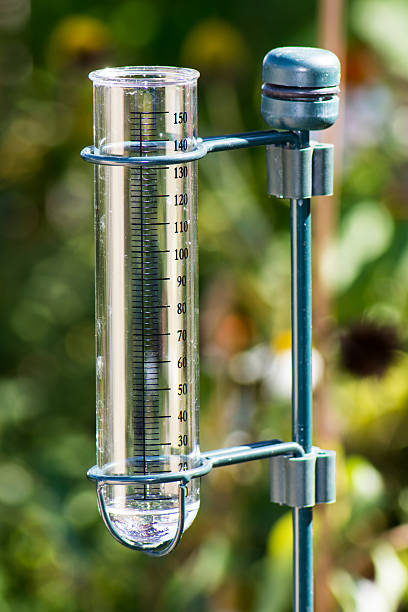The Rain Gauge: Encouraging Neighborhoods with Exact Rain Data
Wiki Article
DIY Rainfall Gauge: Basic Steps to Make Your Own
Are you thinking about tracking rainfall in your location? Producing your own DIY rainfall scale is a effective and straightforward way to gauge and record rainfall. With simply a few typical products and some standard actions, you can conveniently build your very own rain scale at home. In this overview, we will certainly provide you with a detailed procedure to help you create your own rain scale. No requirement for any specialized expertise or devices - this task can be finished by any person. By complying with these straightforward guidelines, you will certainly have a reliable device to gauge rains and add to your understanding of the local climate patterns. Allow's obtain started on making your DIY rainfall gauge today!Gather Materials
To begin building your Do it yourself rain scale, collect all the needed materials using a thorough list of products. Having the appropriate products on hand will make certain the effective production of your rain scale and allow for exact dimensions of rainfall. Collecting these products ahead of time will simplify the building process and make sure that you have everything you require to develop your own DIY rain scale.Prepare the Container

Mark the Measurement Increments
To properly measure the quantity of rains, accurately marking the dimension increments on your DIY rain gauge is necessary. Without exact and clear markings, it would certainly be difficult to identify the precise quantity of rains accumulated in your rain scale. Below are the steps to mark the measurement increments on your rainfall gauge.First, pick the device of measurement that you intend to use. One of the most common devices for determining rainfall are millimeters and inches. Use a long-term pen or waterproof paint to mark the increments on the side of your rainfall gauge as soon as you have actually selected the unit. For inches, you can note every quarter inch or every half inch, relying on your choice. For millimeters, you can note every 10 millimeters or every 20 millimeters.
When noting the increments, it is essential to ensure that they are evenly spaced and clearly noticeable. Utilize a ruler or determining tape to guarantee accuracy and consistency. In addition, ensure that the link markings are resistant to fading or abrading, as direct exposure to the components may cause useful site them to deteriorate in time.
Location the Rain Gauge Outdoors
The rainfall scale need to be positioned outdoors to properly collect rainfall information. The place chosen for the rainfall gauge should be cost-free and open from any type of blockages that could potentially affect the measurement of rainfall. It is important to discover a place that is not blocked by trees, structures, or various other structures that might block the rainfall from reaching the scale. This will make certain that the gathered data is agent of the actual rains in the location.In addition, it is important to place the rainfall gauge on a steady surface, such as a level ground or a sturdy article. This will protect against any motion or tilting of the scale, which can result in incorrect measurements. It is additionally advisable to prevent putting the scale near any resources of man-made water, such as sprinklers or drain systems, as this might hinder the accuracy of the measurements.
Monitor and Document Rainfall Information
Regular surveillance and recording of rainfall information is essential for precise data evaluation and interpretation. By keeping an eye on rainfall measurements, you can gain beneficial insights into weather condition patterns, climate patterns, and water resource management. To properly keep track of and tape rains data, it is important to establish a routine and keep regular methods.To start with, make certain that your rain gauge is positioned in an open location away from obstacles such as trees or buildings that might obstruct rains. In addition, make sure the rain gauge is level and firmly secured to stop any kind of movement that can affect the accuracy of you could look here the measurements.

When tape-recording the rainfall data, it is necessary to note the date and time of each measurement. Make use of a leader or a determining stick to figure out the rains depth in the rain gauge, and record this information properly.
To ensure the accuracy of the measurements, it is suggested to clear the rain gauge after each recording. This will stop any kind of overflow or dissipation from influencing succeeding dimensions.
Conclusion
To conclude, creating a DIY rain scale is a functional and easy way to keep an eye on and videotape rains information (The Rain Gauge). By adhering to the steps laid out in this write-up, you can quickly collect materials, prepare the container, mark the measurement increments, and position the rainfall scale outdoors. Frequently monitoring and recording rains information can provide useful information for numerous objectivesHaving the ideal products on hand will make certain the successful production of your rainfall gauge and permit for exact dimensions of rainfall.To precisely gauge the quantity of rainfall, precisely noting the measurement increments on your DIY rainfall scale is necessary.The rain scale need to be positioned outdoors to properly collect rains data. The location chosen for the rainfall gauge need to be free and open from any kind of obstructions that can potentially influence the dimension of rainfall.In verdict, developing a DIY rain gauge is a easy and sensible means to check and tape rains information.
Report this wiki page